Maitreya Bodhisattva, the Future Buddha — the face of Love; the loving friend of all sentient beings
Maitreya Bodhisattva, the Future Buddha — the face of Love; the loving friend of all sentient beings Why is Maitreya Bodhisattva, the Future Buddha, the face of love? Why does his name translate as “friend” — and more precisely,...
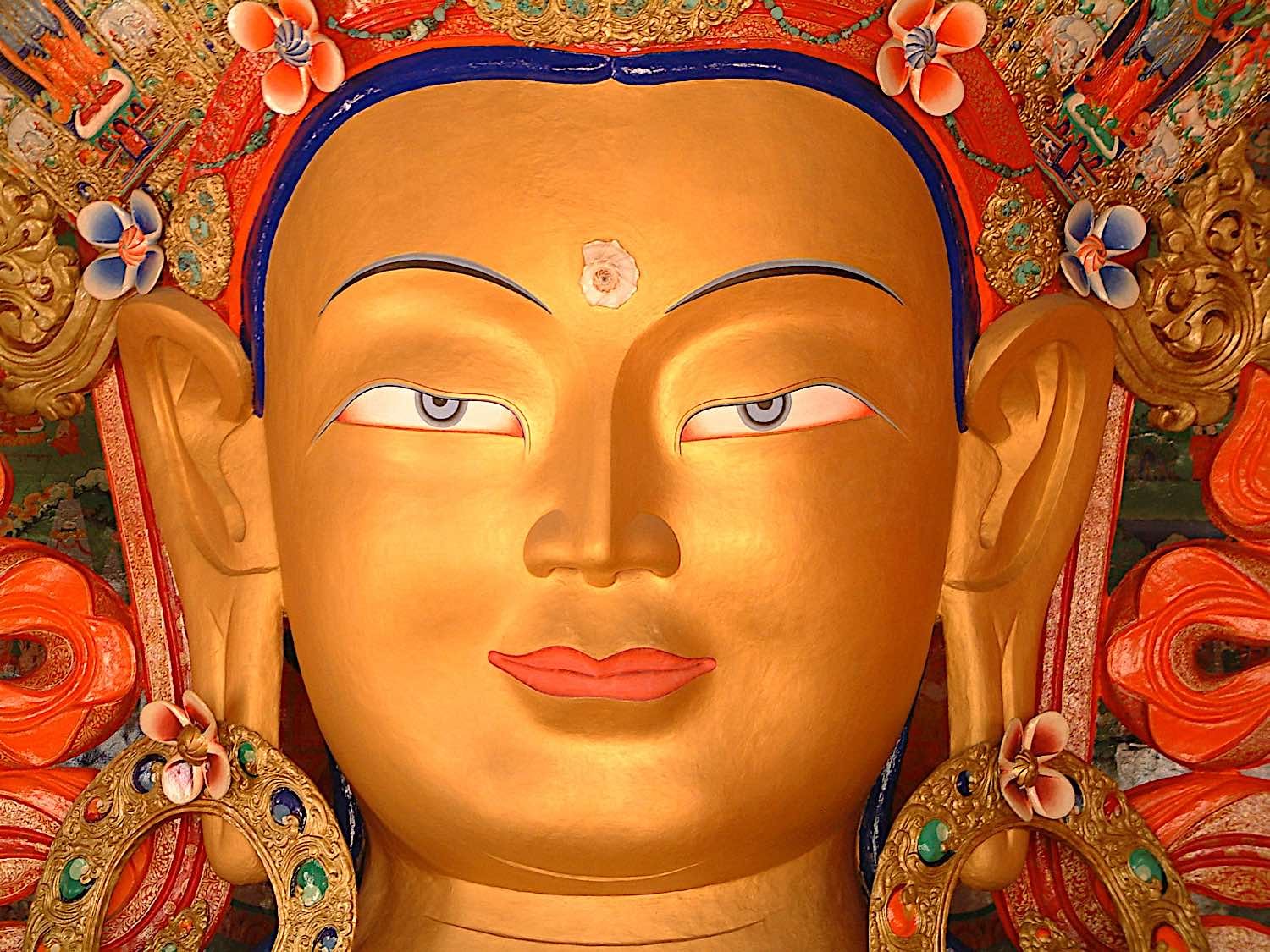
Maitreya Bodhisattva, the Future Buddha — the face of Love; the loving friend of all sentient beings
Why is Maitreya Bodhisattva, the Future Buddha, the face of love? Why does his name translate as “friend” — and more precisely, loving friend? His Bodhisattva name also translates as “just love.” Why have so many people through history falsely claimed to be Maitreya Buddha?
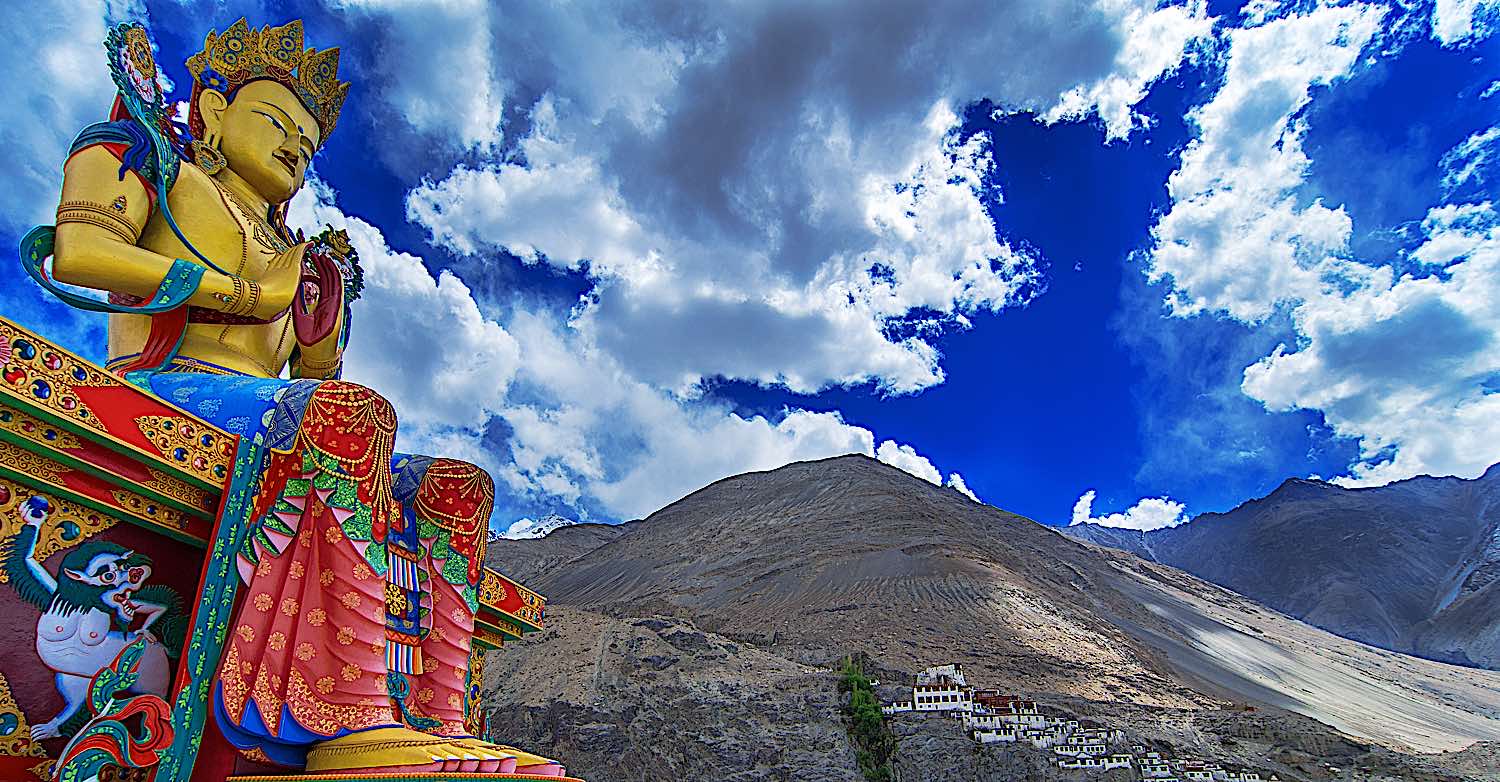 Maitreya Buddha statue in Ladakh. Maitreya Buddha, the Loving Friend Bodhsiattva is the Buddha to come in the future. He is usually depicted seated on a throne.
Maitreya Buddha statue in Ladakh. Maitreya Buddha, the Loving Friend Bodhsiattva is the Buddha to come in the future. He is usually depicted seated on a throne.
Maitreya as Buddha foretold in many Sutras
In the Lotus Sutra and Amitabha Pureland Sutra, he is known as Ajita. In earlier Pali Sutta, he is mentioned as Metteyya in the Cakkavatti-Sīhanāda Sutta (Digha Nikaya 26). He is also found in the Buddhavamsa, Chapter 28 mentions three Buddhas that preceded Dīpankara, as well as the future Buddha, Maitreya.
 Maitreaya Bodhisattva, the Future Buddha, whose name means Loving Friend.
Maitreaya Bodhisattva, the Future Buddha, whose name means Loving Friend.
Maitreya is also foretold in the Samyutta Nikaya’s Maitreyavimāna Sutta (Samyutta Nikāya 36.21). Mention of Maitreya is made numerous times throughout the Mahayana Sutras such as the Heart Sutra and Surangama Sutra, often reaffirming that Maitreya will be a Buddha who follows after Gautama Buddha and preceded by many Buddhas such as Dipankara Buddha.
The Lotus Sutra contains Maitreya’s biography and describes him in detail. The first chapter of the sutra begins with a staff bearing Maitreya’s image appearing in space to challenge Mara, and then describes Maitreya sitting on a jeweled lotus throne surrounded by bodhisattvas and gods, such as Manjushri, Samantabhadra and Avalokiteśvara. Maitreya is also presented in the Lotus Sutra as the teacher who will succeed Gautama Buddha and Maitreya’s name is often mentioned along with Amitābha Buddha.
To read more about the Lotus Sutra, see>>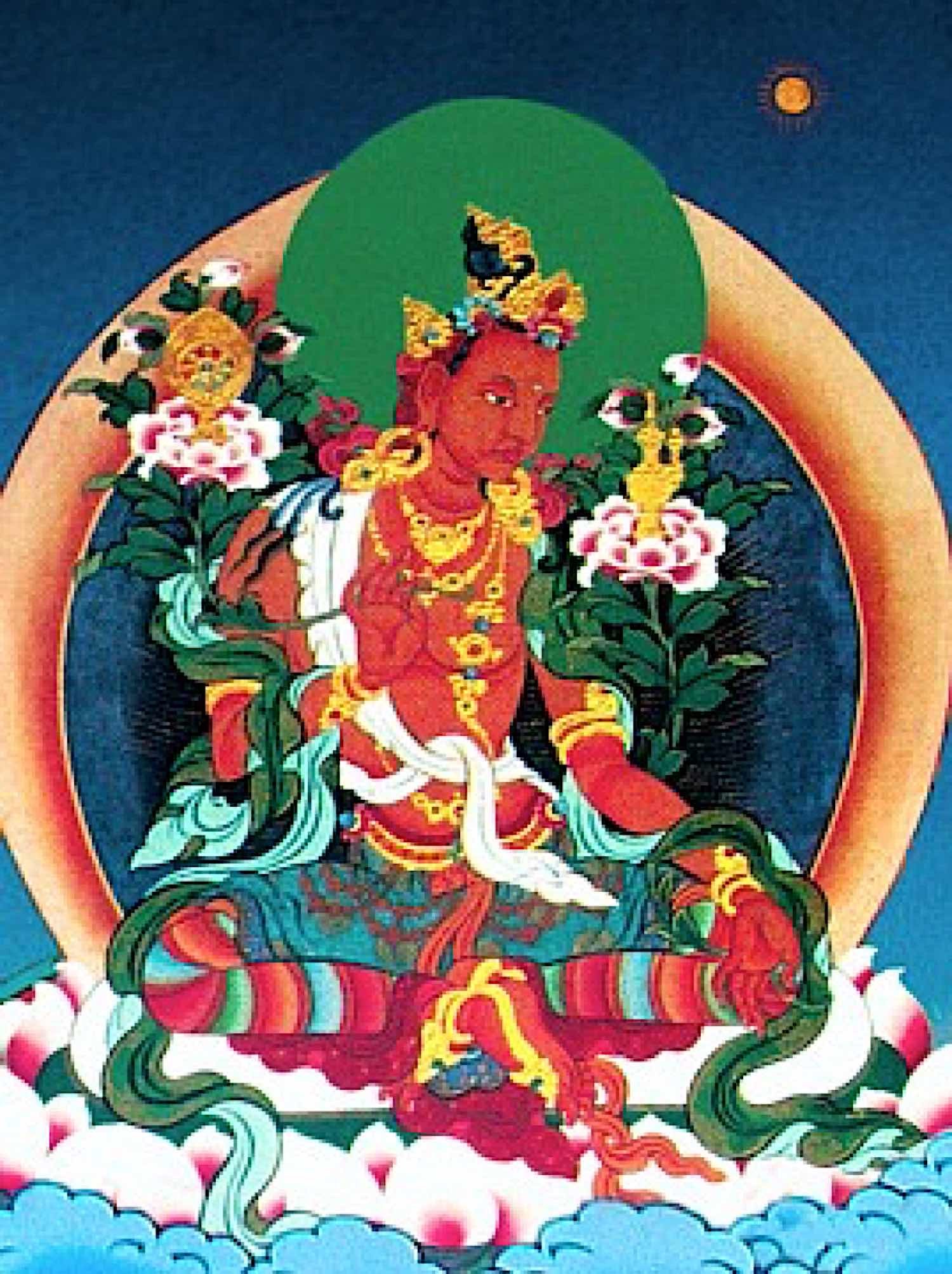 Maitreya as he appeared to Asanga.
Maitreya as he appeared to Asanga.
Five Treatises of Maitreya
In the Tibetan tradition, Maitreya transmitted five precious teachings to Asanga, called the Five Treatise of Maitreya.
Mipham Rinpoche wrote:
“After the noble bodhisattva Asanga performed the practice of Lord Maitreya for twelve human years, he met Maitreya face-to-face and was led to the heavenly realm of Tushita. Maitreya presented Asanga with five commentaries that comment upon the wisdom intent of all the words of the Victorious One. These five treatises are the Two Ornaments, the Two Treatises That Distinguish, and the Sublime Continuum.”
The Five Treatises are:
The Ornament of Clear Realization (Skt. Abhisamayālaṃkāra; Tib. མངོན་པར་རྟོགས་པའི་རྒྱན་; Trad. Chin. 現觀莊嚴論) The Ornament of the Mahayana Sutras (Skt. Māhayānasūtrālaṃkāra; Tib. ཐེག་པ་ཆེན་པོའི་མདོ་སྡེ་རྒྱན་; Trad. Chin. 大乘莊嚴經論). Distinguishing the Middle from the Extremes (Skt. Madhyāntavibhāga; Tib. དབུས་དང་མཐའ་རྣམ་པར་འབྱེད་པ་; Trad. Chin. 辨中邊論頌). Distinguishing Dharma and Dharmata (Skt. Dharma-dharmatā-vibhāga; Tib. ཆོས་དང་ཆོས་ཉིད་རྣམ་པར་འབྱེད་པ་; Trad. Chin. 辨法法性論) The Sublime Continuum (Skt. Uttaratantra Śāstra; Tib. རྒྱུད་བླ་མ་; Trad. Chin. 分別寶性大乘無上續論).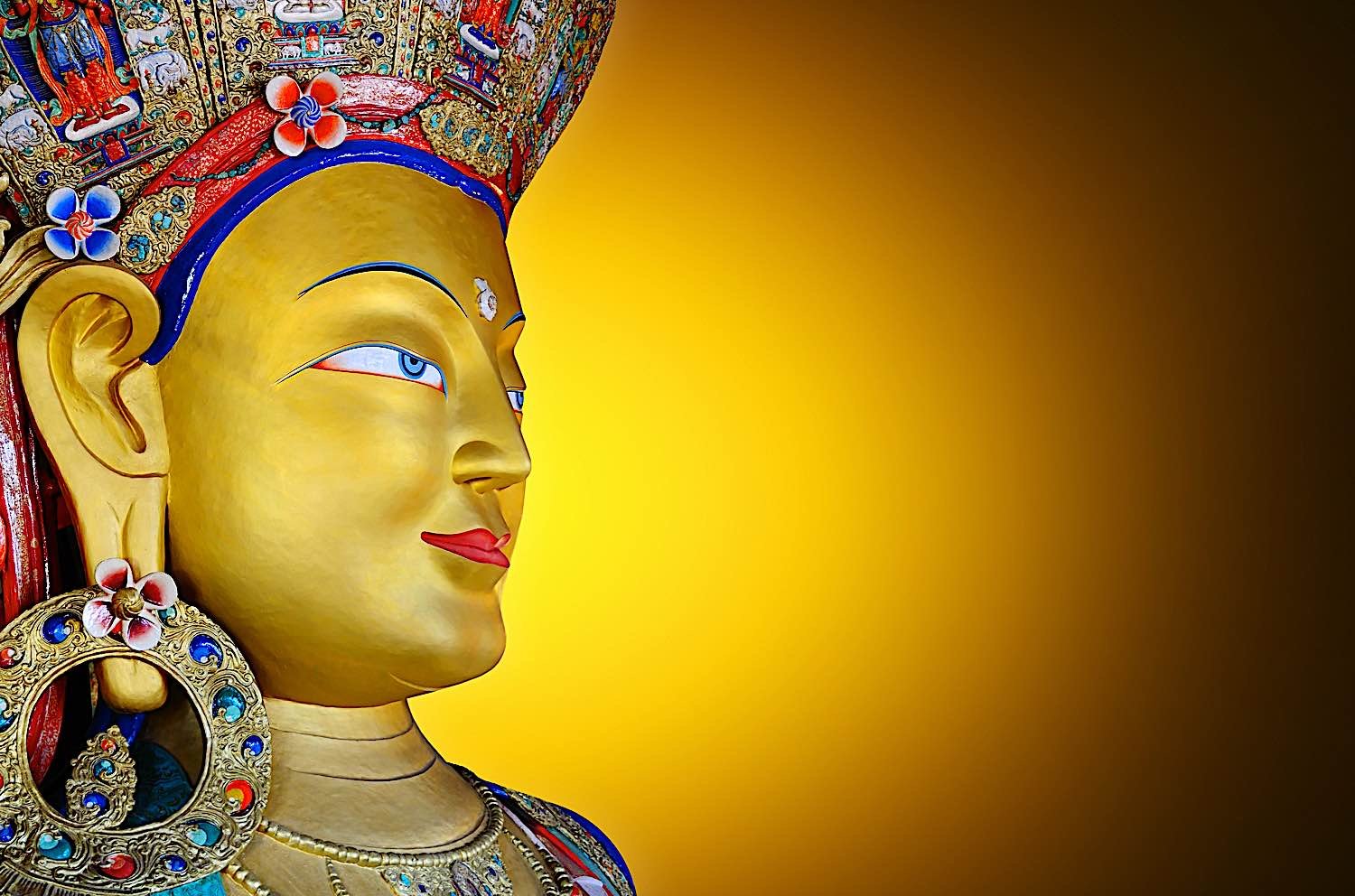 Face of a loving friend — Maitreya Buddha.
Face of a loving friend — Maitreya Buddha.
Source of his name: Maitri
Sanskrit word maitrī “friendship, love, kindness”, which is in turn derived from the noun Mitra. Maitreya’s name Maitreya is derived from the Sanskrit word maitrī “friendship” — however Maitri has many layered meanings: benevolence, kindness, friendliness, amity, goodwill, active love for others. Maitri is one of the ten Paramis of Theravadan Buddhism. His practice is the practice of Metta, or loving kindness.
Metta (loving kindness) is, literally, the practice of Loving Kindness — and the practice of Maitreya.
To read more about Metta practice, see>>Maitreya’s epithet Mettāyus (Pali: Mettājina).
Buddha Maitreya is commonly known by his Chinese and Japanese name Miroku. Maitreya as Miroku Bosatsu appears often in artwork, particularly statues.
His names in other languages are[1]:
Sanskrit मैत्रेय
(Maitreya) Pāli मेत्तेय्य
(Metteyya)Burmese အရိမေတ္တေယျဘုရား
Chinese 彌勒菩薩
弥勒菩萨
Cyrillic Майдар, Асралт
(Mayidar, Asaraltu)
Japanese 弥勒菩薩(みろくぼさつ)
(romaji: Miroku Bosatsu)
Khmer សិអារ្យមេត្រី, អរិយមេត្តយ្យ
Korean 미륵보살
彌勒菩薩
(RR: Mireuk Bosal)
Shan ဢရီႉမိတ်ႈတေႇယႃႉ
Sinhala මෛත්රී බුදුන්
(Maithri Budun)
Thai พระศรีอริยเมตไตรย
(RTGS: Phra Si Ariya Mettrai)
Tibetan བྱམས་པ་
(Wylie: byams pa)
(THL: Jampa)
བྱམས་པ་མགོན་པོ་
(Wylie: byams pa’i mgon po)
(THL: Jampé Gönpo)
Vietnamese 彌勒菩薩
(Di lặc Bồ Tát)
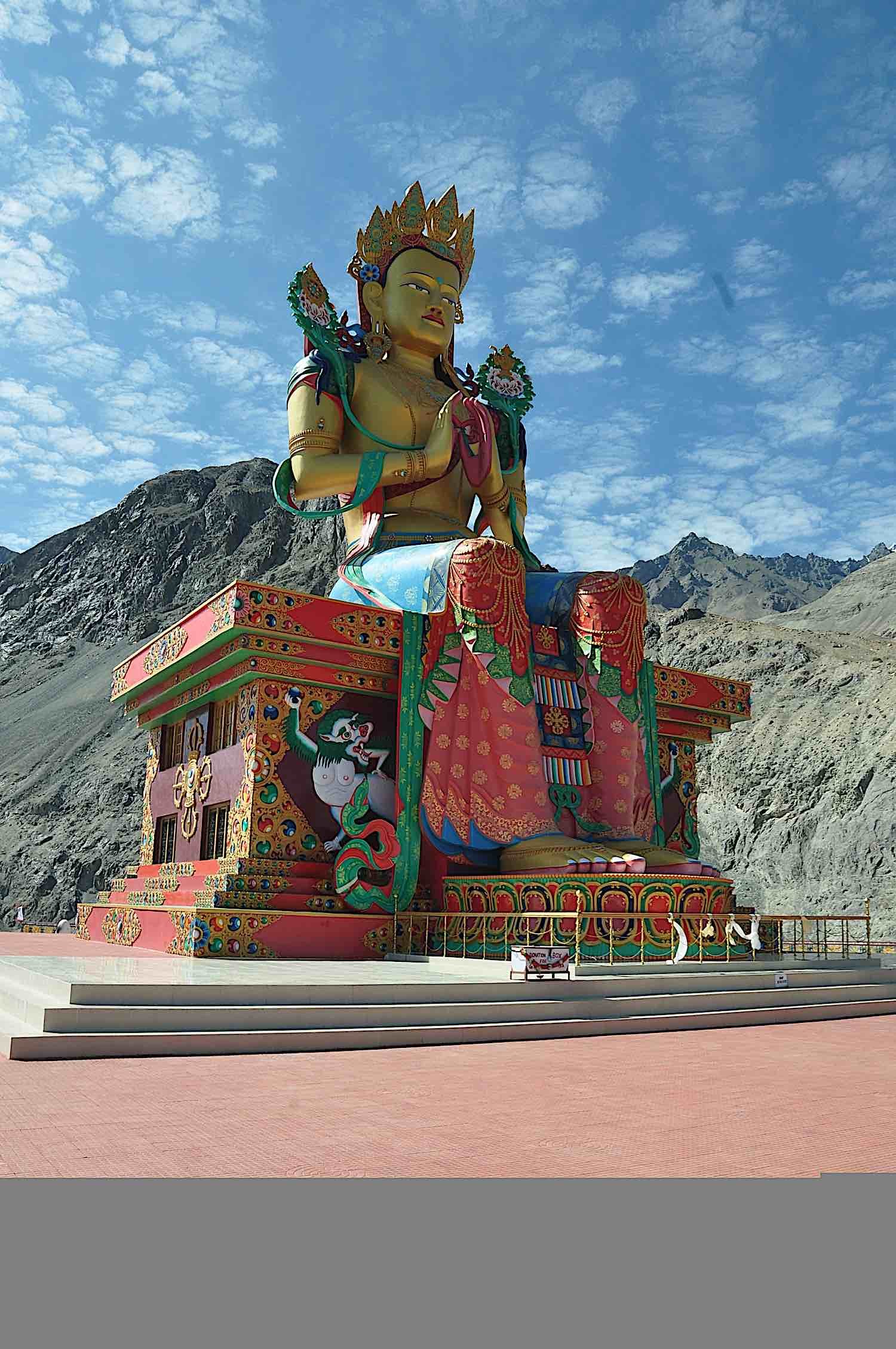 Maitreya Buddha, a giant statue in Ladakh India.
Maitreya Buddha, a giant statue in Ladakh India.
Maitreya’s appearance
Of course, Maitreya is always friendly and peaceful in appearance, in keeping with his role as a loving friend of suffering sentient beings.
His practice flourished during the time Alexander the Great arrived in India. Many statues of Maitreya, in the Greco-Buddhist style, portray him as a beautiful nobleman with a Kumbha (or Bhumpa) or wisdom urn in his left hand.
Maitreya is sometimes featured in Buddhist art on a large lotus flower with his legs hanging down or on a throne with his legs crossed and resting on a small footstool.
The earliest Maitreya statue in China dates to the 6th century CE, though the Maitreya concept probably entered China much earlier, during the 2nd century CE. Maitreya is also found in Thai and Cambodian art from at least the 7th century CE.
In recent years, Maitreya has become popular in Western countries, particularly the United States, where Maitreya statues may be seen in many private homes and public places such as parks and Buddhist centers.
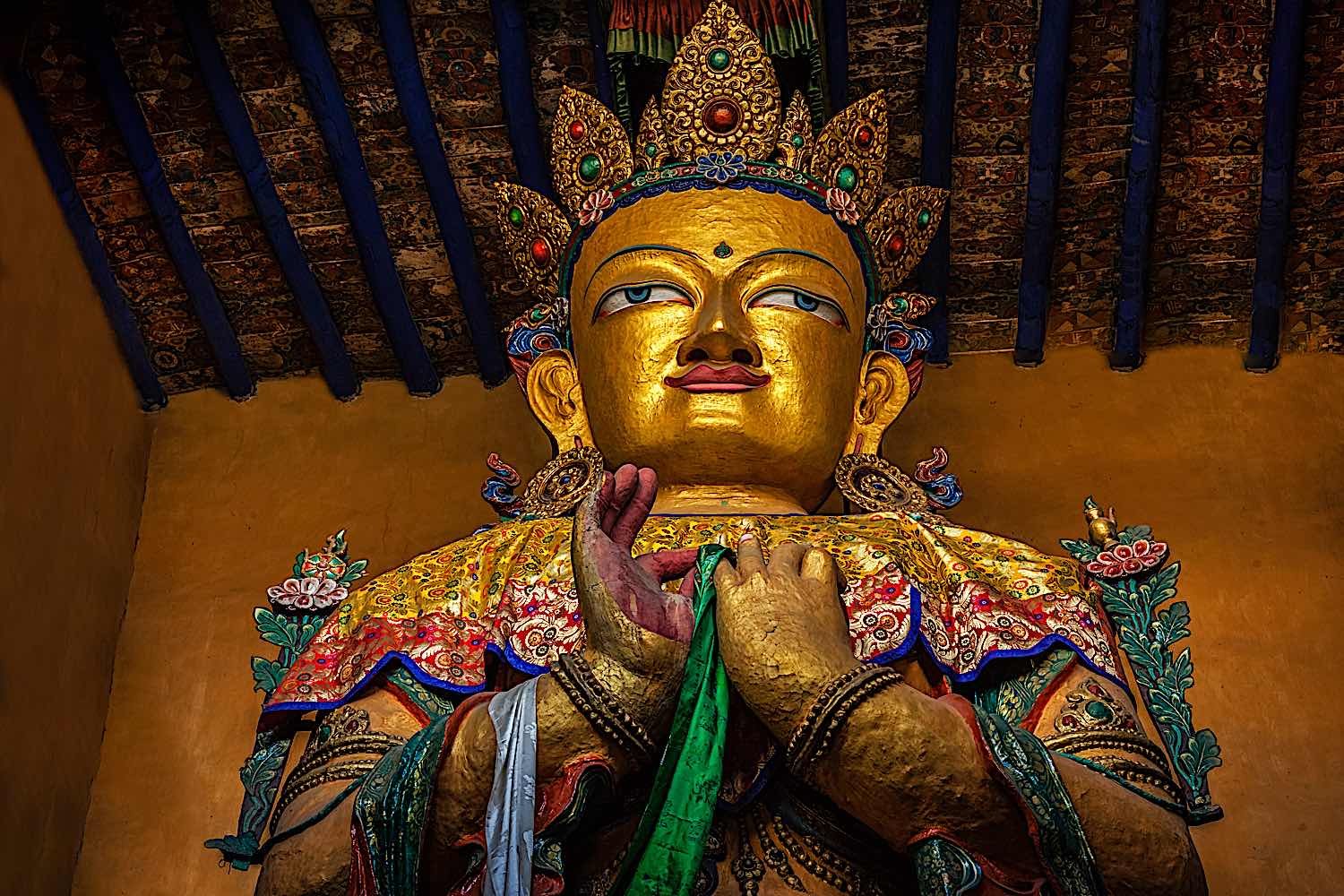 Maitreya Buddha in Tsemo Gonpa Leh, Ladakh, India.
Maitreya Buddha in Tsemo Gonpa Leh, Ladakh, India.
Maitreya’s role as a savior
Maitreya Bodhisattva is often depicted seated on a lotus throne holding a Dharma wheel or teaching bell in his left hand while making the Abhaya mudra (fearlessness gesture) with his right hand. This mudra represents Maitreya’s role as a teacher of the Dharma, which will lead all beings to liberation from suffering.
Maitreya is also known as the “Buddha of the Future” because he is said to be the next Buddha who will appear on Earth. Maitreya is often linked with the Amitabha Buddha, as they are both seen as saviors who will help sentient beings in their journey towards enlightenment.
It is Maitreya’s role as “savior” and future Buddha that led to so many fraudulent tricksters claiming throughout history to be Maitreya come to earth. (See the section on Maitreya claimants.)
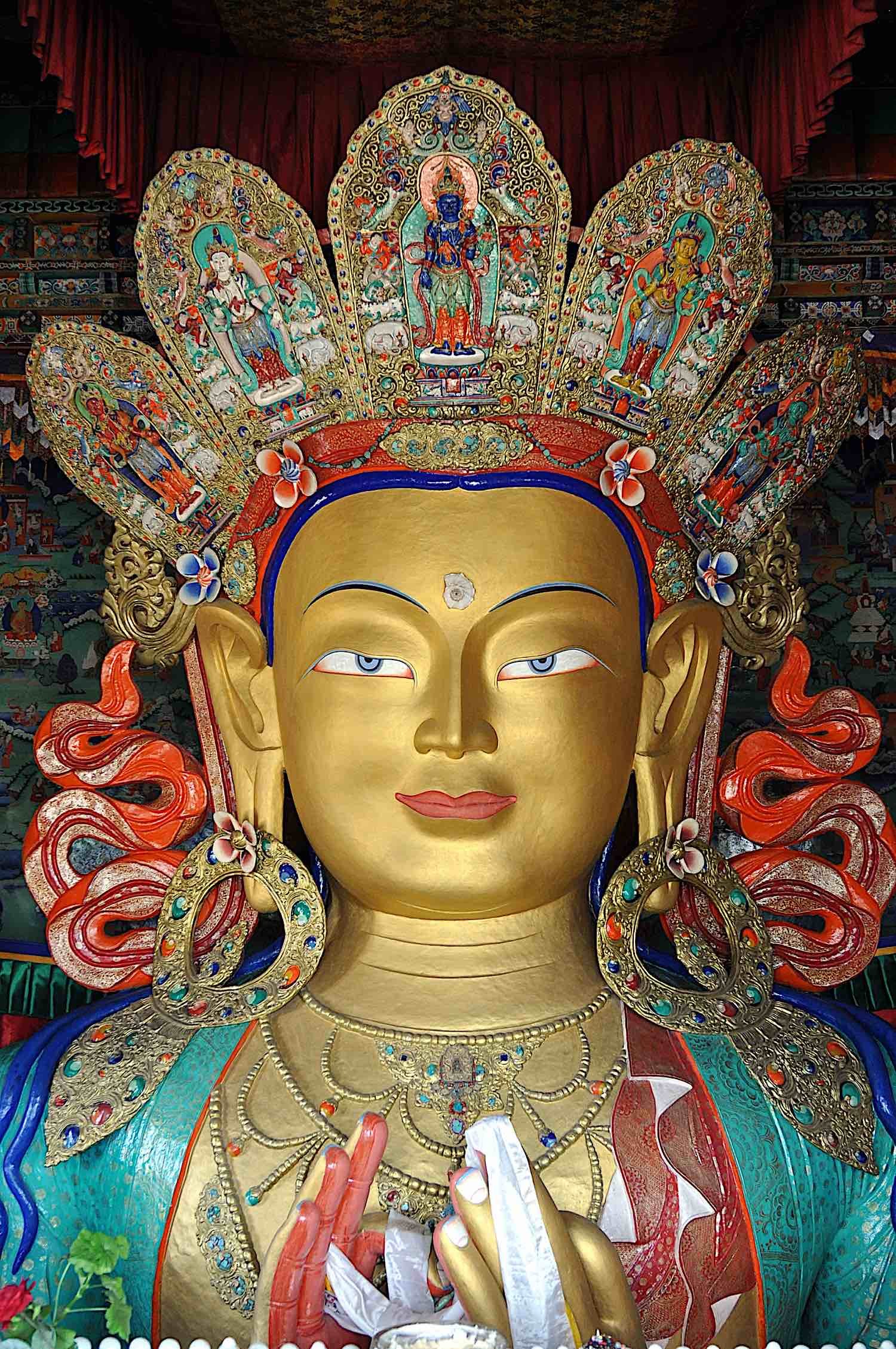 Maitreya Bodhisattva, the Future Buddha, statue in Ladakh.
Maitreya Bodhisattva, the Future Buddha, statue in Ladakh.
Maitreya’s compassion
Maitreya Bodhisattva embodies the Bodhisattva ideal of Mahayana Buddhism: one who delays their own Buddhahood out of compassion for all sentient beings. Maitreya’s name means “loving friend” or “friend of all”, and his compassionate nature is extended to all beings, regardless of whether they are human, animal or anything else. Maitreya is therefore known as the “friend of all creatures”.
Maitreya’s compassion is further extended to include even those who have caused harm. In the Maitri Upanishad, Maitreya says:
“By taking refuge in me, even those who have committed the most heinous crimes will be freed from their karma and will attain liberation.”
This shows that Maitreya’s compassion is not selective — it is available to all, no matter how bad their past actions may have been. Maitreya’s compassion is therefore seen as boundless and all-inclusive.
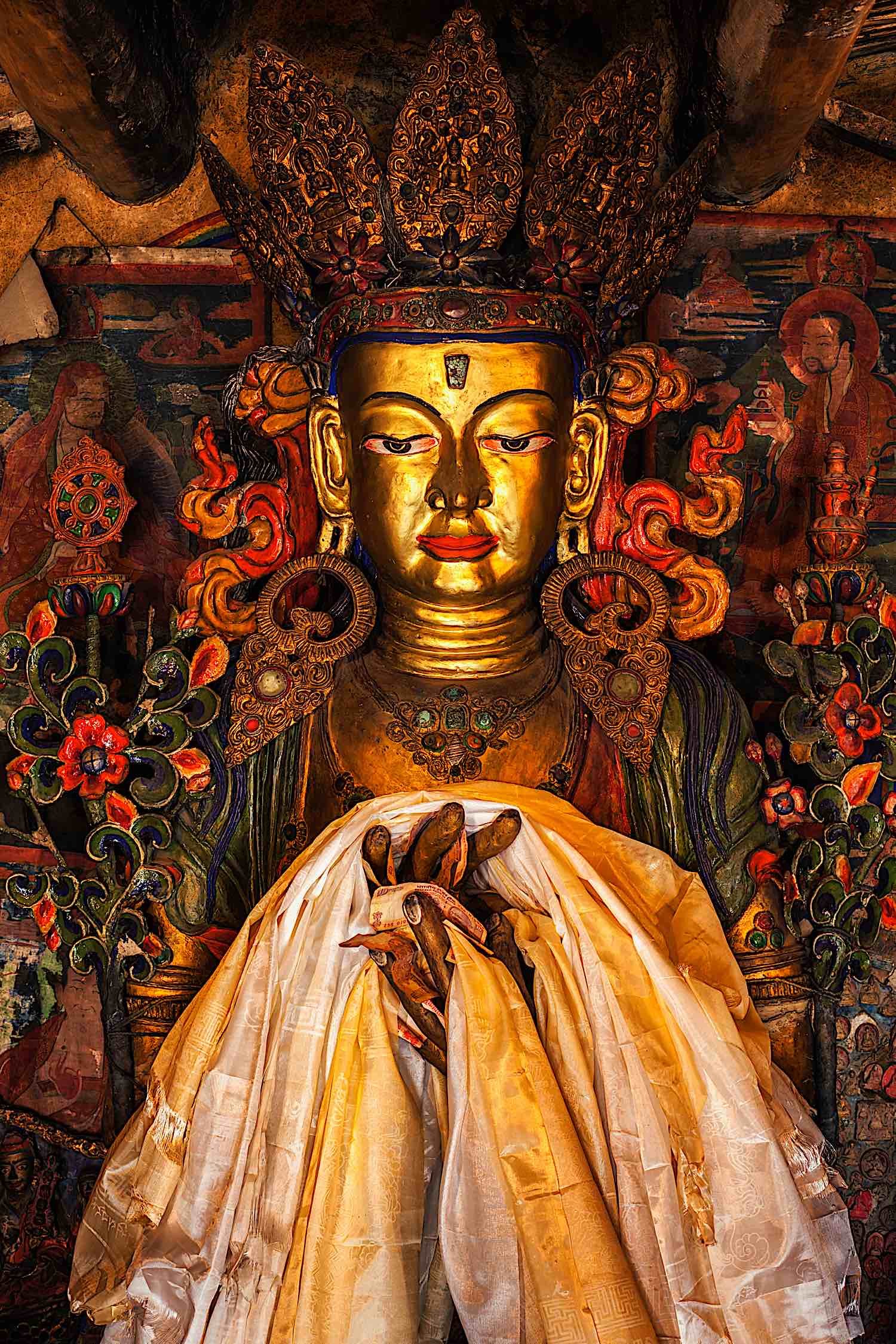 Maitreya statue in Thicksey Gompa, Ladakh, India
Maitreya statue in Thicksey Gompa, Ladakh, India
Maitreya as a role model
Because Maitreya Bodhisattva is the personification of love and compassion, he provides an excellent role model for all of us who wish to develop these qualities within ourselves. By studying Maitreya’s life and teachings, we can learn how to cultivate love and compassion in our own lives.
Maitreya’s name means “loving friend”, which highlights his compassionate nature. He is known as the “friend of all creatures” because his compassion extends to all beings, regardless of whether they are human, animal or anything else. Maitreya is therefore an excellent role model for those of us who wish to develop our own capacity for compassion.
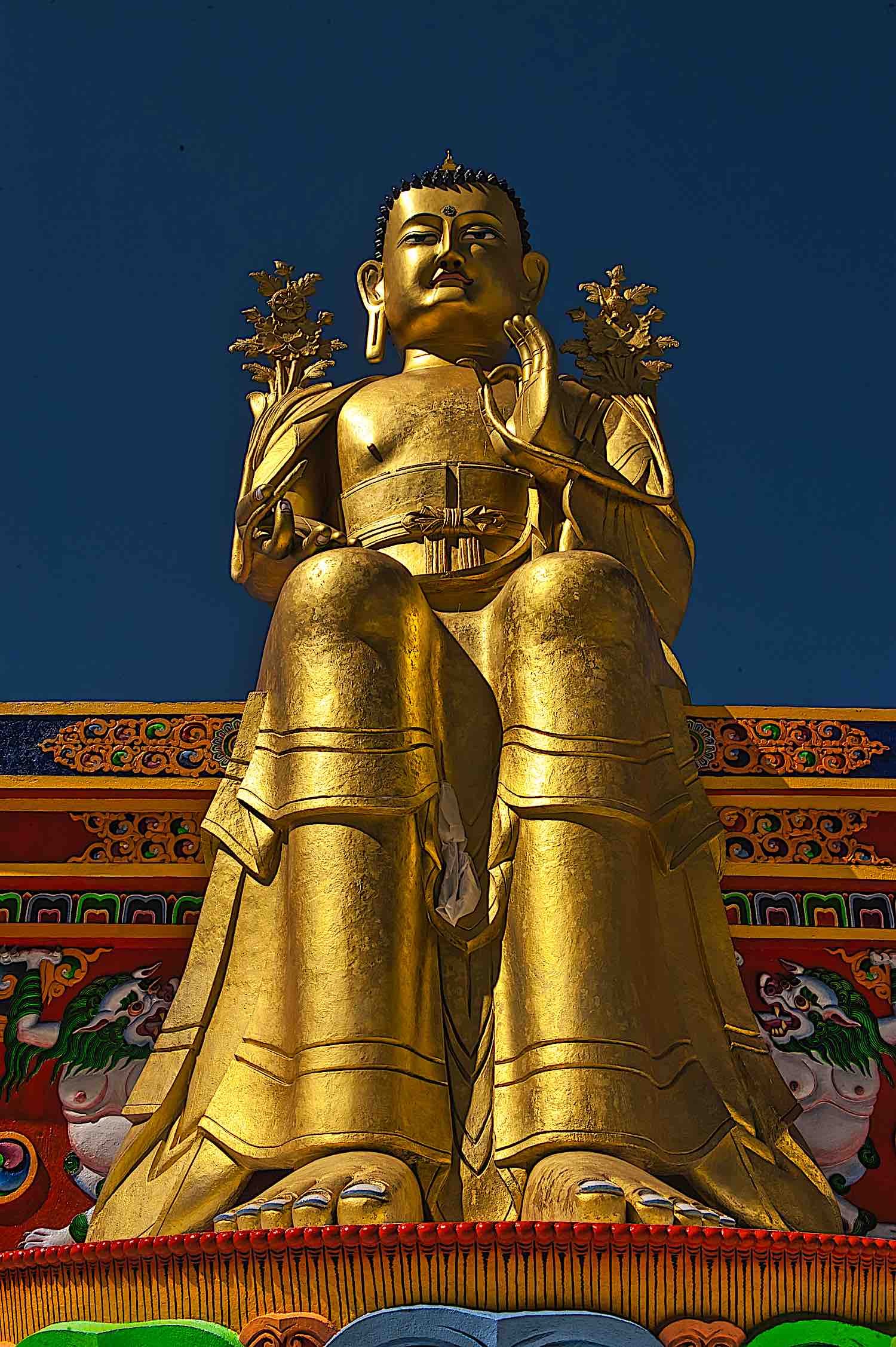 Golden Maitreya Buddha statue in Likir Monastery, Leh, Ladakh.
Golden Maitreya Buddha statue in Likir Monastery, Leh, Ladakh.
The Fifth Buddha — to come
By tradition, Shakyamuni Buddha was the 4th Buddha of our age. The fifth and final Buddha of our age (bhadrakalpa) will be Maitreya — who will arrive when the last of the Dharma has vanished.
Maitreya will then teach the Dharma anew and lead all beings to liberation.
Maitreya is therefore known as the “Buddha of the Future”.
How to reach Maitreya today
Although he will come as the “future” manifested Buddha in our world, according to the prophecies of Shakyamuni Buddha, he is “reachable” now through meditation, prayer, mantras and practice. Although he resides in Tushita Heaven — he is active as a compassionate Bodhisattva. Simply call his name, meditate on his form, chant his mantra, and his compassionate power will reach you.
His simplest prayer is to chant:
Come, Maitreya, Come!
Maitreya’s mantra
His seed syllable is maim.
Mai
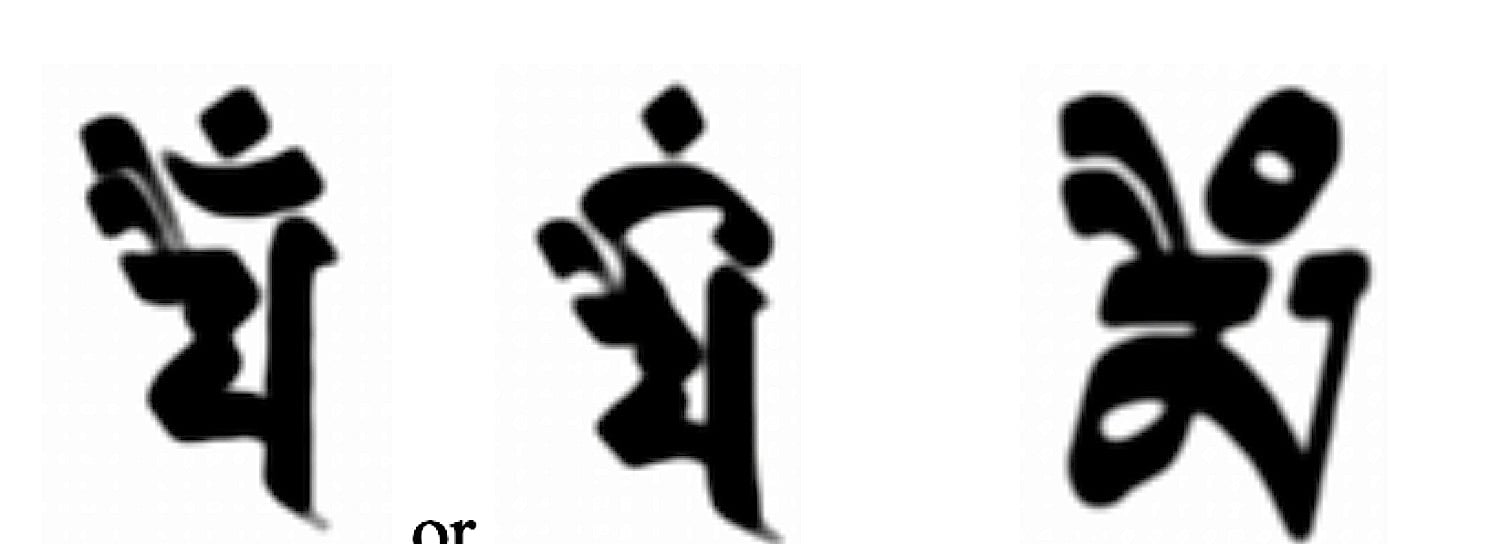 Maim seed syllable in Siddhim and Tibetan.
Maim seed syllable in Siddhim and Tibetan.
His mantra, with Tibetan and Siddham characters — from VisibleMantra.org — is:
oṃ mai tri ma hā mai tri mai tri ye svā hā
oṃ maitri mahāmaitri maitriye svāhā
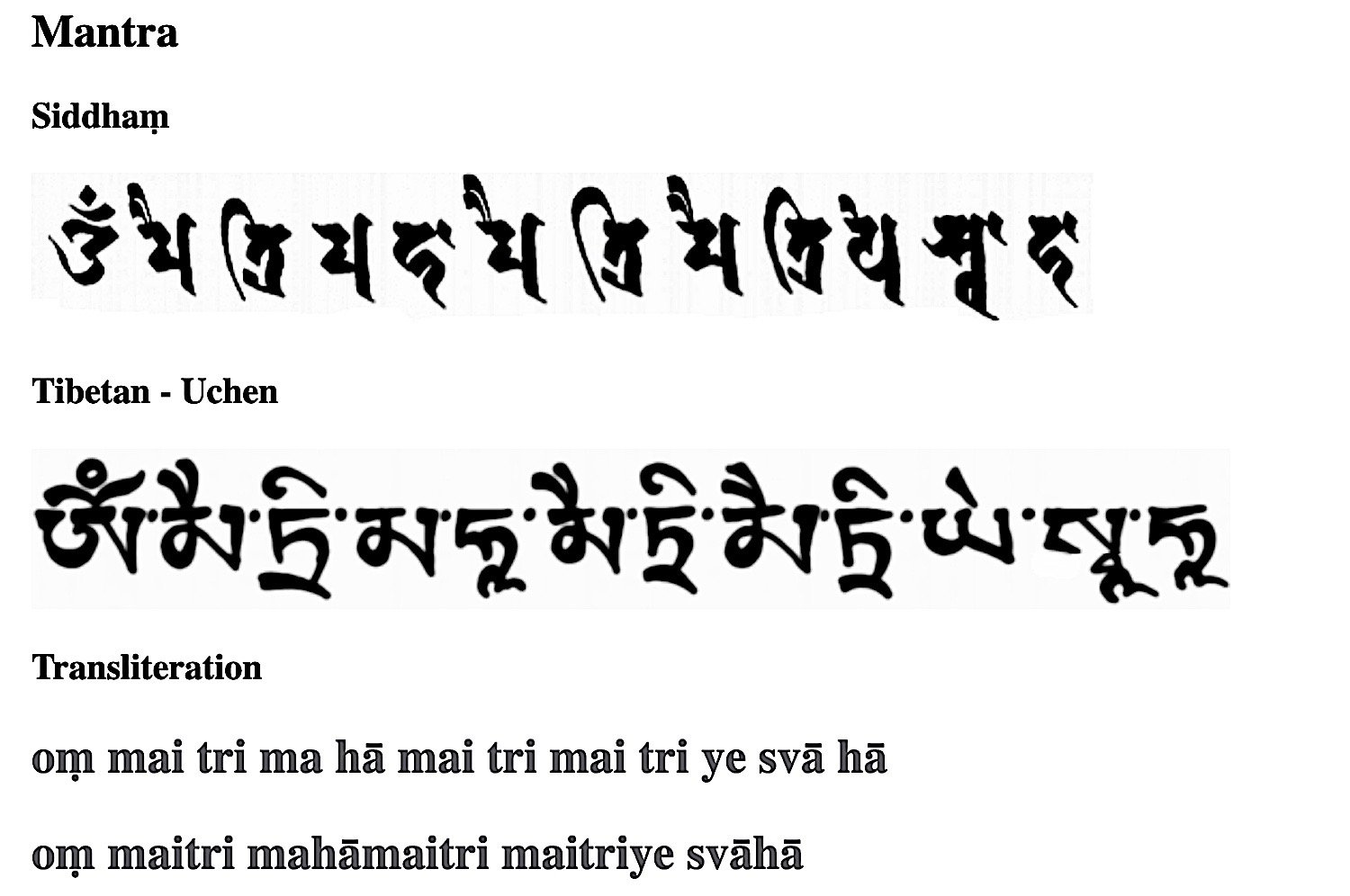 Mantra of Maitreya in Siddhim and Tibetan characters and transliterated from VisibleMantra.org.
Mantra of Maitreya in Siddhim and Tibetan characters and transliterated from VisibleMantra.org.
Especially profound is the Mantra of Maitreya Buddha’s Promise.
The Mantra of Maitreya Buddha’s Promise
(Arya-Maitrina-pratijna-nama-dharani)
The root mantra
NAMO RATNA TRAYAYA
Homage to the Three Jewels
NAMO BHAGAVATE SHAKYAMUNIYE TATHAGATAYA ARHATE SAMYAK SAM BUDDHAYA
Homage to the Lord Shakyamuni, Tathagata, Arhat, Completely Perfect Buddha
TADYATHA: OM AJITE AJITE APARAJITE
As follows: Om Invincible, Invincible, Unconquered
AJITAN CHAYA HARA HARA
Conquer the Unconquered, take, take [it]
MAITRI AVALOKITE KARA KARA
You Who Look Down with Friendliness, act, act
MAHA SAMAYA SIDDHI BHARA BHARA
Bring, bring the fulfillment of your great pledge
MAHA BODHI MÄNDA VIJA
Shake the seat of great awakening
MARA MARA ATMAKAM SAMAYA
Remember, remember [your] pledge for us
BODHI BODHI MAHA BODHI SVAHA
Awakening, awakening, great awakening, svaha
The heart mantra
OM MOHI MOHI MAHA MOHI SVAHA
Om fascinating, fascinating, greatly fascinating, svaha
The close heart mantra
OM MUNI MUNI MARA SVAHA
Om sage, sage, remember, svaha
The Maitreya claimants
Any feature on this loving Bodhisattva — who will be the next Buddha in our world, and who is currently an Enlightened Bodhisattva in Tushita Heaven — must, unfortunately, cover the unsavory aspects of people “posing” as Maitreya coming to earth. There is, of course, nothing unsavory about Maitreya — the most loving and noble of all the Bodhisattvas. Unfortunately, though, many dictators, military leaders, religious leaders, and other opportunists have claimed to be Maitreya come to earth to save us all. They are nothing more than unfortunate blips in history — universally discredited as false by Buddhist leaders of the past. These are just a few of the many:
613 the monk Xiang Haiming claimed to be Maitreya and even made an imperial grab for titles and power. In 690, Wu Zetian, who was empress regent of the Wu Zho interregnum proclaimed herself to be Maitreya. 10th century: Gung Ye, a warlord of Korea claimed to be Maitreya and was a short-lived king. He ordered his subjects to worship him. Others included Lu Zhongyi, L. Ron Hubbard, Samuel Aun Weor, Adi Da, etc, etc. [1]SOURCES
[1] Maitreya on Wikipedia>> https://en.wikipedia.org/wiki/Maitreya
[2] From his commentary on Distinguishing the Middle from the Extremes.

 Hollif
Hollif 






























